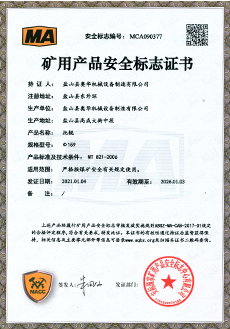 Afrikaans
Afrikaans  Albanian
Albanian  Amharic
Amharic  Arabic
Arabic  Armenian
Armenian  Azerbaijani
Azerbaijani  Basque
Basque  Belarusian
Belarusian  Bengali
Bengali  Bosnian
Bosnian  Bulgarian
Bulgarian  Catalan
Catalan  Cebuano
Cebuano  Corsican
Corsican  Croatian
Croatian  Czech
Czech  Danish
Danish  Dutch
Dutch  English
English  Esperanto
Esperanto  Estonian
Estonian  Finnish
Finnish  French
French  Frisian
Frisian  Galician
Galician  Georgian
Georgian  German
German  Greek
Greek  Gujarati
Gujarati  Haitian Creole
Haitian Creole  hausa
hausa  hawaiian
hawaiian  Hebrew
Hebrew  Hindi
Hindi  Miao
Miao  Hungarian
Hungarian  Icelandic
Icelandic  igbo
igbo  Indonesian
Indonesian  irish
irish  Italian
Italian  Japanese
Japanese  Javanese
Javanese  Kannada
Kannada  kazakh
kazakh  Khmer
Khmer  Rwandese
Rwandese  Korean
Korean  Kurdish
Kurdish  Kyrgyz
Kyrgyz  Lao
Lao  Latin
Latin  Latvian
Latvian  Lithuanian
Lithuanian  Luxembourgish
Luxembourgish  Macedonian
Macedonian  Malgashi
Malgashi  Malay
Malay  Malayalam
Malayalam  Maltese
Maltese  Maori
Maori  Marathi
Marathi  Mongolian
Mongolian  Myanmar
Myanmar  Nepali
Nepali  Norwegian
Norwegian  Norwegian
Norwegian  Occitan
Occitan  Pashto
Pashto  Persian
Persian  Polish
Polish  Portuguese
Portuguese  Punjabi
Punjabi  Romanian
Romanian  Russian
Russian  Samoan
Samoan  Scottish Gaelic
Scottish Gaelic  Serbian
Serbian  Sesotho
Sesotho  Shona
Shona  Sindhi
Sindhi  Sinhala
Sinhala  Slovak
Slovak  Slovenian
Slovenian  Somali
Somali  Spanish
Spanish  Sundanese
Sundanese  Swahili
Swahili  Swedish
Swedish  Tagalog
Tagalog  Tajik
Tajik  Tamil
Tamil  Tatar
Tatar  Telugu
Telugu  Thai
Thai  Turkish
Turkish  Turkmen
Turkmen  Ukrainian
Ukrainian  Urdu
Urdu  Uighur
Uighur  Uzbek
Uzbek  Vietnamese
Vietnamese  Welsh
Welsh  Bantu
Bantu  Yiddish
Yiddish  Yoruba
Yoruba  Zulu
Zulu Understanding Belt and Pulley Systems in Mechanical Engineering Applications
Belt and Pulley Drive Systems An Overview
Belt and pulley drive systems are integral to various mechanical applications, playing a critical role in the transmission of power and motion. These systems consist of belts, pulleys, and often a drive motor, allowing efficient transfer of energy in a wide range of machines and devices.
The basic principle of a belt and pulley system involves the use of a flexible belt that wraps around two or more pulleys. When one pulley, typically connected to a motor, rotates, the belt moves accordingly, driving the other pulleys. This method of power transmission has several advantages, making it a preferred choice in many industrial applications.
Belt and Pulley Drive Systems An Overview
Another critical advantage is the capacity for speed variation. By altering the size of the pulleys, the speed of the driven pulley can be increased or decreased. This allows for customized operation tailored to specific tasks, which is particularly useful in machines that require varying speeds for different functions, such as conveyor systems and manufacturing equipment.
belt and pulley drive

Additionally, belt and pulley systems can absorb shock loads better than rigid systems. The elasticity of the belt helps to dampen vibrations and reduces the risk of damage during sudden changes in load or speed. This characteristic enhances the overall longevity and reliability of the machinery, minimizing maintenance needs and operational downtime.
Moreover, belt drives are generally quieter than gear drives, making them suitable for applications where noise reduction is crucial. This attribute is especially important in commercial settings and home appliances, where user comfort is a priority.
However, belt and pulley systems are not without their challenges. Over time, belts can wear out and require replacement. Factors such as environmental conditions, belt material, and load conditions can affect the lifespan of the belt. Regular maintenance is essential to ensure optimal performance, including periodic inspections and tension adjustments.
To mitigate some of the drawbacks, advancements have been made in belt technology. Modern materials such as rubber composites and synthetic fibers have improved durability and heat resistance. Additionally, the introduction of variable-speed drives has further enhanced the versatility and functionality of belt and pulley systems.
In conclusion, belt and pulley drive systems remain a fundamental component in modern engineering, providing an efficient and adaptable method of power transmission. Their ability to transfer power over distances, accommodate speed variations, and absorb shocks makes them invaluable in various industries, from manufacturing to automotive applications. Continuous advancements in material technology and design methodologies promise to sustain their relevance and efficiency in the years to come.
-
Revolutionizing Conveyor Reliability with Advanced Rubber Lagging PulleysNewsJul.22,2025
-
Powering Precision and Durability with Expert Manufacturers of Conveyor ComponentsNewsJul.22,2025
-
Optimizing Conveyor Systems with Advanced Conveyor AccessoriesNewsJul.22,2025
-
Maximize Conveyor Efficiency with Quality Conveyor Idler PulleysNewsJul.22,2025
-
Future-Proof Your Conveyor System with High-Performance Polyurethane RollerNewsJul.22,2025
-
Driving Efficiency Forward with Quality Idlers and RollersNewsJul.22,2025





























